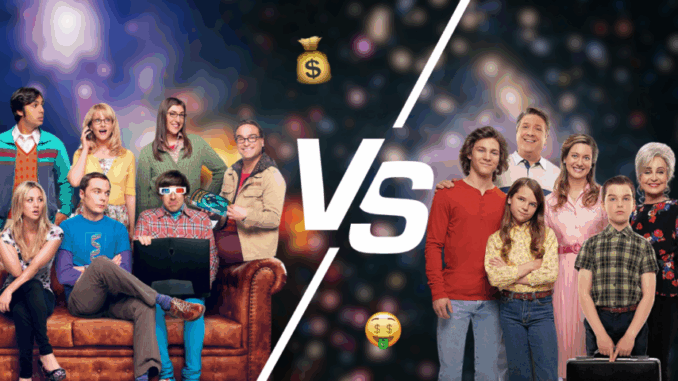
Oh, how I miss the nerdy chaos of The Big Bang Theory and the heartfelt Southern charm of Young Sheldon. One gave us awkward roommates and Comic Con references, the other gave us a tiny Texan genius who somehow made physics feel emotional. Both shows made us laugh, cry, and obsess over string theory (okay, maybe not that last one). But let’s be honest, they also made their stars seriously rich.
So, who got paid more, The Big Bang Theory cast or the adorable prodigies of Young Sheldon?
So, how much was The Big Bang Theory cast paid?
By the final season, TBBT main five, Jim Parsons, Kaley Cuoco, Johnny Galecki, Simon Helberg and Kunal Nayyar, were each earning $1 million per episode. Yep, a million. Per. Episode. That’s way more than most scientists earn in a year, and they didn’t even have to write a single paper.
And before that? They were still raking in six figures, with hefty raises along the way. Even Mayim Bialik and Melissa Rauch were pulling in $500,000 an episode toward the end. The show was one of the biggest sitcoms on the planet, and the paycheques absolutely reflected that.
Well, how much was Young Sheldon cast paid then?
While no one hit the million mark, the Young Sheldon crew still earned more per episode than most people make in a year. Little Iain Armitage (Sheldon) began at $30k and worked his way up to at least $60k per episode by the final seasons, not bad for a teenager who says things like “mom had me tested” with a straight face.
Lance Barber (George) ended up making a whopping $300k per episode, with Zoe Perry (Mary) on $150k, and Annie Potts (Meemaw) on a very respectable $125k. Even the younger cast, Raegan Revord and Montana Jordan, were earning tens of thousands per episode. Let that sink in.
So, who got paid more?
Well, The Big Bang Theory cast were TV millionaires by the end but they were also adults with years of experience under their belts. The Young Sheldon crew started making big money before most kids have finished learning their times tables. So while The Big Bang Theory stars got paid more, the Young Sheldon cast has a massive head start.
So, who wins the salary smackdown?
If we’re talking cold hard cash, The Big Bang Theory gang wins, no contest. But if we’re talking who got rich the earliest, it’s the Young Sheldon lot. Plus, they didn’t even have to fake a PhD.

